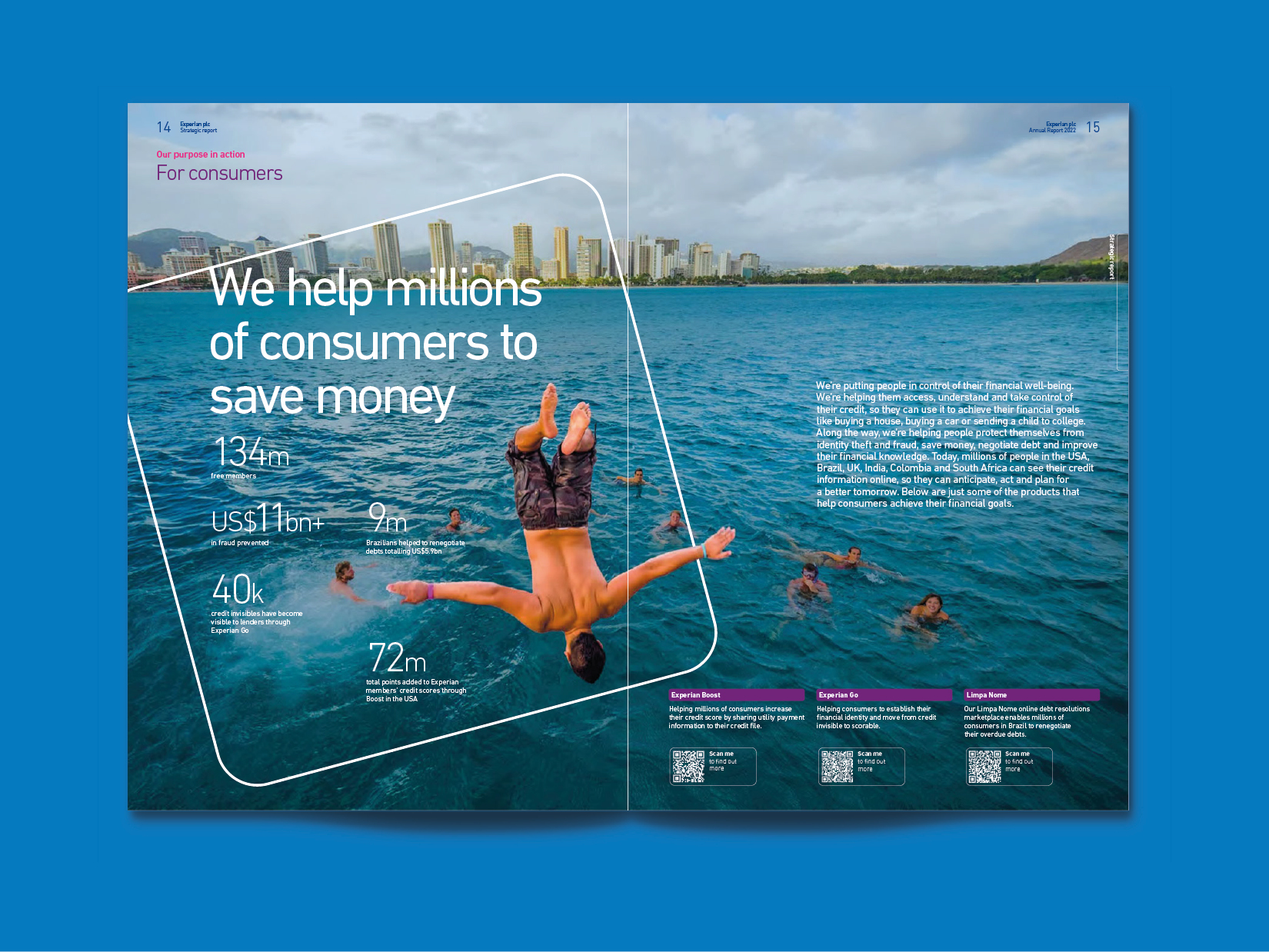The transformation has been stubbornly slow to reach reporting, largely because of its complex regulatory and process demands. But that’s changing. In this article we summarise how and why digital regulations and technology advances are starting to reshape the creation and the format of corporate and sustainability reporting.
Reporting digitisation is here
With the introduction of mandatory HTML reporting (ESEF, UKSEF, CSRD etc), the digitisation of reporting has begun. Today’s ‘single electronic format’ is just a small first step on a journey that will eventually bring all the benefits of full digital functionality to reporting.
For many involved in reporting communications, the early ESEF reports are digitally uninspiring in their current form, converted from PDF. But don’t be fooled by current software limitations. With advances in technology, the new mandatory digital format offers huge potential to transform the future of reporting.
‘Next generation’ digital - transforming reporting
From its unpromising beginnings in plain, data-led filings it is difficult to imagine how XBRL reporting could ever fulfil this promise. Engaging digital communications? Fully accessible content? Google friendly? All in an XBRL report? Really? It may be surprising, but it’s true.
To explore the untapped potential of the new digital format, our team at Friend joined up with digital data leader Experian plc to create a fully interactive XBRL version of Experian’s 2022 report.
View the report.
"As a global leader in digital data services, we are taking this step to visibly lead on the inevitable transition to digital-first reporting – to enhance our reporting, and shape the agenda on digital, communications innovation, XBRL tagging and the IFRS taxonomy."
Mark Pepper, Global Financial Controller, Experian
Experian’s online ESEF report is a first for digital reporting. It has XBRL tagging, combined with all the online features you would expect from digital, and the whole report in the mandatory digital format (xHTML).
Just like the rest of the web, this new type of XBRL report is interactive, responsive and navigable. It also has full search, SEO, analytics, video and much more. This is made possible by the advances in reporting software and offers a tangible glimpse of the future of digital corporate reporting. This ‘next generation’ of digital report also offers a long-term solution to other digital compliance challenges, including accessibility and sustainability reporting, which must also be in this format.
Note For any tech or legal specialists reading... the ‘filing’ version of this report is compliant with all the requirements, and the native xHTML enables the mandatory notes tagging to work properly, overcoming the technical limitations of PDF. This improves the quality and usability of the tagged data and makes the new digital format much more user friendly.

Why publish the full report content online?
First, for compliance. Across international markets, reporting regulations are adopting the new digital format (xHTML, not PDF). This regulatory shift is intended to enable full digital reporting to become more accessible, more engaging and more user friendly (as well as XBRL tagged). These regulations are driving reporting into the digital age.
Second, audience expectation. Digital users increasingly expect to access all information online – in one click, to get straight to specific content from a search engine. This isn’t possible with PDF-based reports.
Third, it builds trust. Fragmented, inaccessible digital reporting content does little to improve stakeholders’ trust in companies. Making reporting better, more usable and digitally available to everyone, not just investors, is key to building trust.
Fourth, inclusion, accessibility and equality. As a core goal of digital reporting regulations, the new format must become accessible as soon as possible. New technology now offers digital reporting content in a fully accessible xHTML format, with all information available to all stakeholders.
In conclusion, a printed report with a summary online and PDF download is no longer adequate. All reporting content should become easier to access online – to be able to search and find what you need instantly, in one digital-first format, and with easy-to-view XBRL.


What about the future of PDF and print?
Will digital reporting replace the PDF or print? The simple answer is we don’t know yet. It will be led by what stakeholders need and prefer. But it’s unlikely digital will ever replace them completely because each format has its own merits, and they complement each other. (Note: Experian’s digital-first report was also produced in PDF and print, with identical content to the digital report).
In the long term, full digital reporting may refocus the print report on summary information, supported by print-on-demand options. Regulation permitting, these changes could streamline page count and reduce overall print and mailing quantities to more sustainable levels, while not affecting stakeholder choice.
How was Experian’s interactive XBRL report created?
Experian’s report was created using ‘Reportl’ a new, purpose-built digital reporting CMS. In ‘Reportl’, the digital report is produced automatically from the same single source of content as the print and PDF versions. This means the content is created and audited once, and all users get a consistent experience, whatever format they choose.
‘Reportl’ has been developed over many years by the specialist digital reporting team at Friend, with input from companies, regulators, investors, XBRL experts, auditors, developers, agencies and software partners.
Put simply, Reportl makes digital-first reporting easier for companies, and better for end users.
Find out more about Reportl.
Feedback and further development
Reporting regulations are shifting the focus towards digital-first. As technologies advance we expect to see the format and functions improve fast.
We welcome opinions on the Experian ‘next generation’ XBRL report and feedback will help our ongoing development. Please email us with your thoughts.
Note This article is aimed primarily at communications, IR and reporting specialists who may still be relatively new to digital-first reporting, and whose responsibilities are the content and communications demands, rather than XBRL tagging. Experian’s prototype report gives a small glimpse of the enormous communications potential of the XBRL format, as well as meeting the data and technical compliance requirements ahead. We will be publishing more detailed articles on the benefits of native xHTML and XBRL as the format develops.